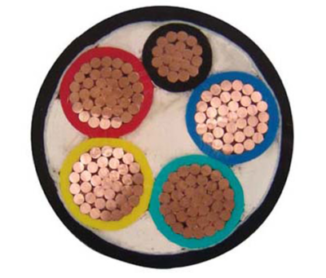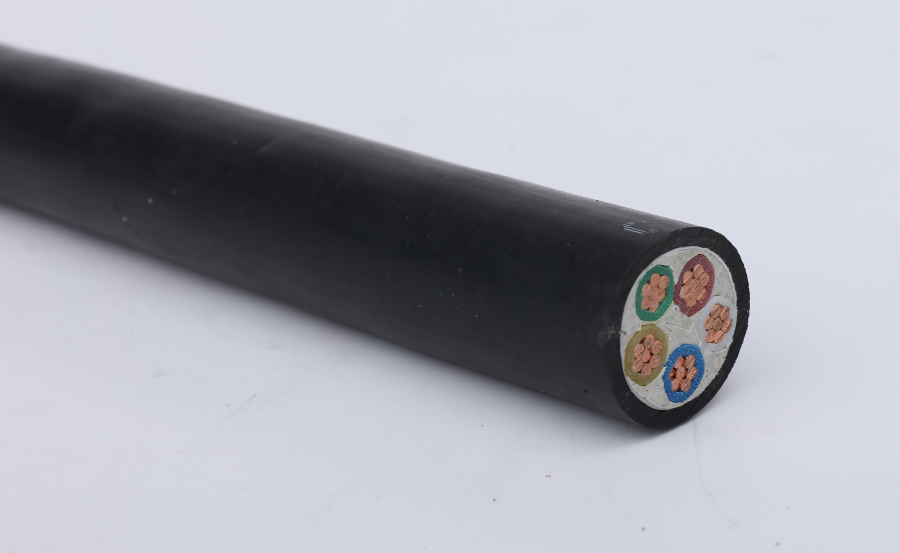Mgbe njikọ nke eriri obere voltaji have obvious damage, mgbawa, mgbawa, and rust. So it means that the connector should not be used anymore. Ọ bụrụ na plating bụ enweghị isi ma ọ bụ enwere ọnọdụ ọjọọ dị ka atụdo efu, gbajiri atụdo, or shrinking pins. Mgbe ahụ nke a pụtakwara na njikọ a ekwesịghịkwa iji ya. Ya mere, gịnị ka anyị kwesịrị ịṅa ntị tupu echichi?
Pay Attention Before Install Low-voltage Cables
Mgbe ị na-etinye eriri obere voltaji, hụ na ọdịdị nke eriri obere voltaji zuru ezu.
If the outer insulation layer of the low-voltage cable has noticeable stains, ọ kwesịrị ịdị ọcha tupu echichi. Ọ bụrụ na oyi akwa mkpuchi mpụta nke eriri obere voltaji nwere ntụpọ doro anya ma ọ bụ ncha dị njọ, you should avoid taking materials from this section of the cable to prevent accidents.
In installing low-voltage cables, it is necessary to ensure that the installation of eriri obere voltaji conforms to safety regulations. Ndị na-arụ ọrụ kwesịrị iji ngwaọrụ pụrụ iche ma wụnye eriri obere voltaji dịka usoro ọrụ ziri ezi si dị.
Ụzọ isi wụnye eriri ọkụ ọkụ dị ala
Mgbe ị na-akpachapụ eri ahụ, ekwesịrị idobe oke maka mfu nhazi. Ma ọ bụ nnọọ amachibidoro imebi oyi akwa mkpuchi, mkpuchi oyi akwa, core conductor, and cable sheath of the parts that do not need to be treated. Ọzọkwa, A machibidoro iwu nke ọma iji aka efu emekọrịta ihe n'oge echichi. Na onye na-eduzi ndị a gbapụrụ agbapụ kwesịrị ịgwọ n'oge iji gbochie elu nke onye nduzi.
Mgbe etinyere eriri obere voltaji, you must use a testing tool to detect whether the wire and cable are well-connected to cable equipment. Nlebara anya pụrụ iche kwesịrị ịṅa ntị na ebe enwere nsonaazụ nkwụsị. Check whether the insulating tape paste prevents water leakage and electricity leakage well.
Na mgbakwunye na ụzọ abụọ ziri ezi n'elu, eriri obere voltaji kwesịkwara ịwụnye dịka ọnọdụ gburugburu ebe obibi si dị. It should prohibit installing low-voltage cables at a high temperature. Na iji gbochie eriri ahụ ka ọ ghara imebi ya nke ọma.
Ihe dị n'elu bụ nlezianya na ụzọ ntinye maka eriri obere voltaji tupu echichi. Tupu wụnye, hụ na njikọ eriri obere voltaji dị n'ọnọdụ dị mma. Ọ bụrụ na eriri nwụnye eriri obere voltaji kwesịrị ịgafe gburugburu ebe dị n'elu, it can protect the cable duct. Ha nwekwara ike ịgbatị ndụ ọrụ. N'ezie, ọ ga-ekwe omume ịzụta eriri obere voltaji dị mma na ọnụ ala dị ala tupu echichi iji hụ na nrụnye dị mma.
Cable Marking
1 Markings shall be placed on electrical equipment to indicate the panel and line numbers from which power and lighting lines lead.
2 Signal and control line numbers shall be identified on all cabinets, terminal boxes, equipment racks, control panels, and operator consoles.
3 Indoor cables shall be labeled and permanently marked with the cable number and secured to all terminal ends and pull boxes of the cable.
4 High voltage feeder cables shall be tagged with ribbon plastic wrap labels and affixed with feeder cable numbers.
5 Cable markers shall be installed on each cable in distribution panels and junction boxes. The cable markers shall be halogen-free and the cable numbers on the markers shall be the same as required on the drawings.
I hope this was useful for you. Ebe a Data, ị nwere ike nweta ozi ndị ọzọ gbasara eriri.

